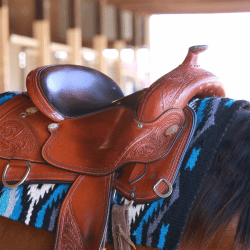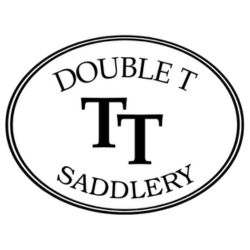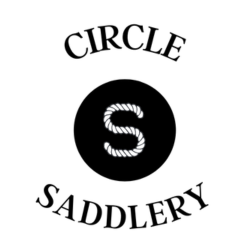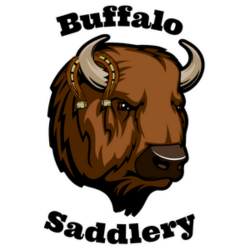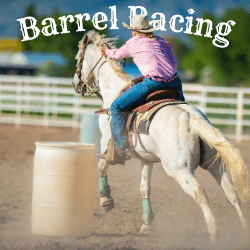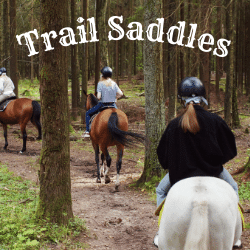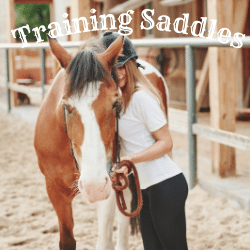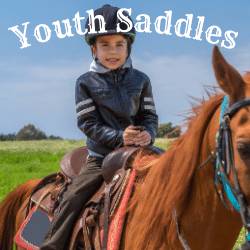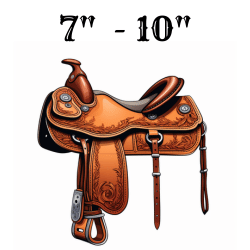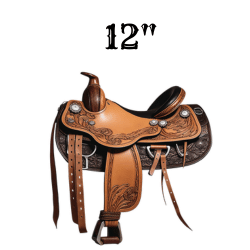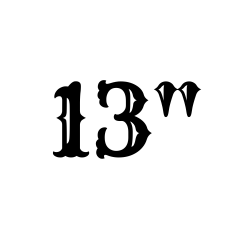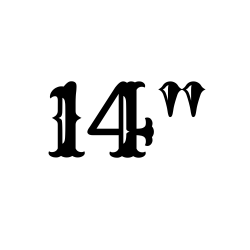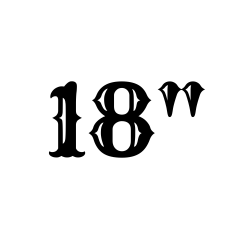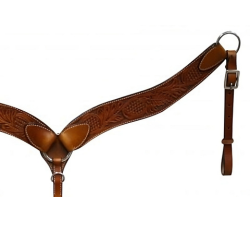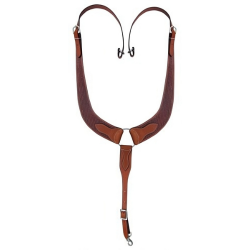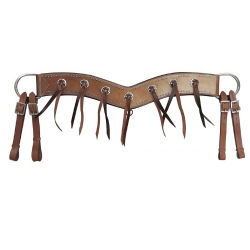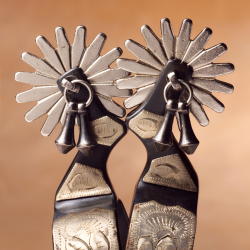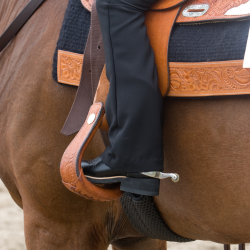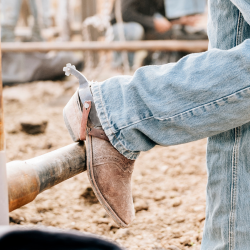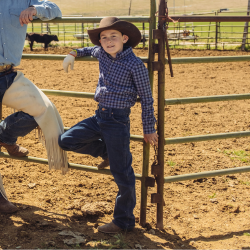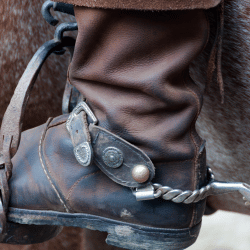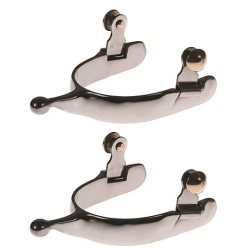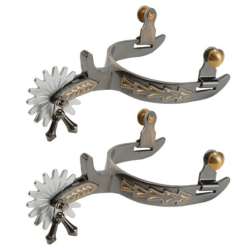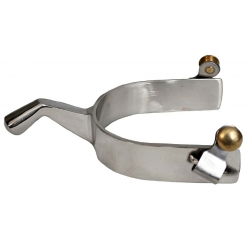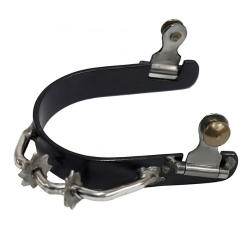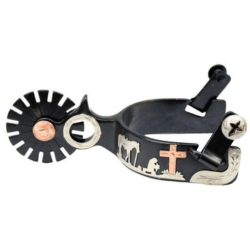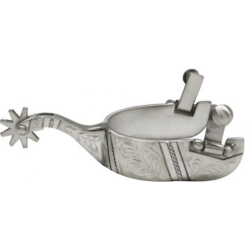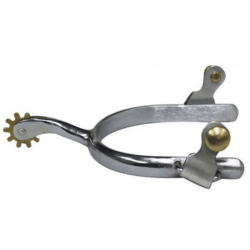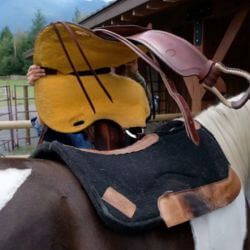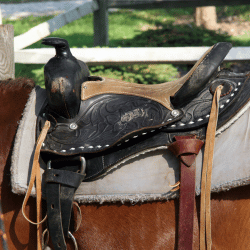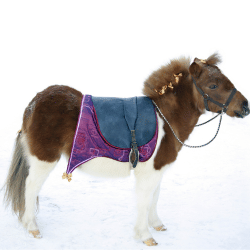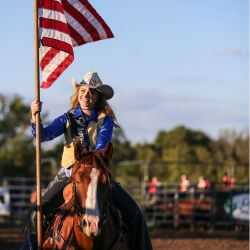In horse riding, a bit is a crucial piece of equipment that is placed in a horse's mouth. It serves various purposes and plays a significant role in communication, control, comfort, and safety. Understanding the purpose of a bit is essential for riders to choose the right one and ensure the well-being of their horses. This article explores the significance of bits in horse riding, discusses the alternative of bitless bridles, and provides insights into caring for the horse's mouth.
Key Takeaways
- Bits are important for communication and control between the rider and the horse.
- Choosing the right bit is crucial for the comfort and safety of the horse.
- Bits play a role in training and developing the horse's skills and responsiveness.
- Using a bit correctly can help build trust and partnership between the rider and the horse.
- Bitless bridles are an alternative to traditional bits and offer advantages in certain situations.
Understanding the Bit

What is a Bit?
A bit is an essential piece of equipment in horse riding. It is a metal mouthpiece that is placed in the horse's mouth and is used to communicate with and control the horse. The bit is connected to the bridle and reins, allowing the rider to direct the horse's movements.
Types of Bits
There are several types of bits that are commonly used in horse riding. Each type of bit has its own design and purpose, and it is important to choose the right one for your horse. Some common types of bits include snaffle bits, curb bits, and pelham bits. Snaffle bits are the most basic type of bit and are often used for young or inexperienced horses. Curb bits are more advanced and provide more leverage, making them suitable for more experienced riders. Pelham bits are a combination of a snaffle bit and a curb bit, offering both direct and indirect rein pressure.
When choosing a bit, it is important to consider the horse's level of training, temperament, and mouth conformation. The bit should fit comfortably in the horse's mouth and allow for clear communication between the rider and the horse. It is also important to regularly check the bit for any signs of wear or damage and replace it if necessary.
How Bits Work
Bits work by applying pressure to different areas of the horse's mouth and jaw. When the rider pulls on the reins, the bit creates pressure on the tongue, bars, and corners of the mouth, which signals the horse to respond. The amount of pressure applied depends on the rider's hands and the type of bit used.
Different types of bits have different mechanisms for applying pressure. For example, a snaffle bit applies direct pressure to the corners of the mouth, while a curb bit uses leverage to apply pressure to the poll and chin groove.
It's important to note that bits should be used correctly and with sensitivity. Rough or harsh handling can cause discomfort or pain to the horse, leading to resistance or even injury. It's crucial for riders to have a good understanding of how bits work and to use them appropriately to communicate effectively with their horse.
Choosing the Right Bit
Choosing the right bit for your horse is crucial for their comfort and performance. It is important to consider factors such as the horse's age, level of training, and mouth conformation. Proper fit is essential to ensure the bit sits comfortably in the horse's mouth and allows for clear communication between the rider and the horse. It is recommended to consult with a knowledgeable professional, such as a trainer or veterinarian, to determine the most suitable bit for your horse.
Importance of Bits in Horse Riding

Communication and Control
Effective communication and control are essential when riding a horse. By using the reins, seat, and legs, riders can convey their intentions to the horse and guide its movements. Consistent signals with your seat and legs will communicate to your horse to maintain the same pace. Pulse your legs gently at a slower rhythm and let your hips follow the horse's movement to signal a transition to a slower gait. To ask for a turn, apply pressure with your inside leg and use your outside rein to guide the horse's head in the desired direction. Remember to maintain a relaxed and balanced position to ensure clear and effective communication with your horse.
Comfort and Safety
When it comes to horse riding, comfort and safety are of utmost importance. The bit plays a crucial role in ensuring both the rider and the horse feel secure and at ease during their ride. A properly fitted bit allows for clear communication between the rider and the horse, enabling them to work together harmoniously. It also provides the necessary control needed to guide the horse and ensure their safety.
In addition to comfort and safety, the bit also helps in the training and development of the horse. Through the use of different types of bits, riders can encourage the horse to respond to subtle cues and aids, helping them refine their skills and become more responsive.
Transitioning to bitless riding is an alternative that some riders choose. Bitless bridles offer a gentler approach and can provide a more comfortable experience for the horse. However, it is important to consider the horse's training and responsiveness before making the switch.
Proper care of the horse's mouth is essential for their comfort and well-being. Regular dental care and proper bit fit are crucial to prevent discomfort and potential injuries. By maintaining good oral health, riders can ensure the horse's comfort and safety throughout their riding journey.
Training and Development
Training and development are crucial aspects of horse riding. It is through training that horses learn to respond to cues and commands from the rider. Consistency is key when it comes to training, as horses thrive on routine and repetition. By consistently reinforcing desired behaviors and correcting unwanted ones, riders can help their horses develop the necessary skills for various riding disciplines.
One effective training technique is desensitization, which involves exposing the horse to different stimuli to reduce fear and increase confidence. This can include introducing the horse to new objects, sounds, and environments. Gradually increasing the level of difficulty helps the horse become more adaptable and less reactive in different situations.
Another important aspect of training and development is building strength and stamina. Just like humans, horses need to build their muscles and endurance to perform at their best. Regular exercise, such as lunging, longeing, and hill work, can help improve the horse's physical fitness and overall performance.
Building Trust and Partnership
Building trust and partnership with your horse is essential for a successful riding experience. It goes beyond just communication and control; it's about creating a strong bond and understanding between you and your horse. Trust is the foundation of any relationship, and it's no different when it comes to horses.
One way to build trust is through groundwork. Groundwork builds mutual confidence; you will be able to read what your horse is thinking and feel braver when facing new challenges together. It's a great opportunity to establish a connection and develop a deeper understanding of your horse's behavior and body language.
Another important aspect of building trust and partnership is spending quality time with your horse outside of riding. This can include grooming, hand grazing, or simply being present in their presence. By doing so, you are showing your horse that you care and are invested in the relationship.
Additionally, consistency is key. Horses thrive on routine and predictability. By providing a consistent and structured environment, you are creating a sense of security and trust for your horse.
Remember, building trust and partnership takes time and patience. It's a journey that requires effort and understanding from both you and your horse. But the rewards are immeasurable, as it will enhance your riding experience and create a strong bond that will last a lifetime.
Bitless Bridles: An Alternative to Bits

What are Bitless Bridles?
Bitless bridles are an alternative to traditional bits in horse riding. They are designed to provide communication and control without the use of a metal bit in the horse's mouth. Bitless bridles work by applying pressure to different areas of the horse's head, such as the nose, chin, or poll, to signal the desired response. This type of bridle can be a suitable option for horses that are sensitive or have dental issues.
Advantages of Bitless Bridles
Bitless bridles offer several advantages over traditional bits. One of the main advantages is that they provide a more comfortable and natural fit for the horse. Without a bit in their mouth, horses can move their jaws more freely and avoid potential discomfort or pain. This can lead to a more relaxed and willing horse, making the riding experience more enjoyable for both the horse and the rider.
Another advantage of bitless bridles is that they can help improve communication between the horse and the rider. By removing the bit, riders rely more on subtle cues and body language to communicate with their horse. This can enhance the partnership and trust between the two, resulting in better responsiveness and cooperation.
Additionally, bitless bridles can be a good option for horses with dental issues or sensitive mouths. Some horses may have dental problems or be more sensitive to the pressure of a bit. Using a bitless bridle can alleviate these issues and provide a more comfortable riding experience for the horse.
Overall, bitless bridles offer a gentler and more natural approach to horse riding, promoting comfort, communication, and partnership between the horse and the rider.
Considerations for Bitless Riding
When considering bitless riding for your horse, there are a few important factors to keep in mind. First, it's essential to choose the right type of bitless bridle that suits your horse's needs and comfort. There are various options available, such as cross-under bitless bridles, side-pull bridles, and hackamores. Each type has its own advantages and considerations, so it's important to do your research and consult with a knowledgeable professional.
Another consideration is the level of control and communication you can achieve with a bitless bridle. While bitless bridles can provide a more natural and gentle way of communicating with your horse, they may not offer the same level of precision and control as a traditional bit. It's important to assess your riding goals and the specific needs of your horse to determine if bitless riding is the right choice.
Lastly, transitioning to bitless riding requires patience and proper training. It's important to gradually introduce the bitless bridle to your horse and ensure they are comfortable and responsive. Seek guidance from an experienced trainer or instructor to ensure a smooth transition and to address any challenges that may arise.
Transitioning to Bitless Riding
Transitioning to bitless riding can be a gradual process that requires patience and understanding. It is important to remember that every horse is different and may respond differently to the change. Here are some steps to consider when transitioning to bitless riding:
-
Start with groundwork: Before riding bitless, it is beneficial to establish a strong foundation through groundwork exercises. This helps to build trust and communication between you and your horse.
-
Introduce a bitless bridle: There are different types of bitless bridles available, such as side-pull, cross-under, and hackamore. Choose a bridle that suits your horse's needs and gradually introduce it during your training sessions.
-
Take it slow: Begin by using the bitless bridle for short periods of time during your rides. Gradually increase the duration as your horse becomes more comfortable and responsive.
-
Seek professional guidance: If you are unsure about transitioning to bitless riding or need assistance, it is recommended to seek guidance from a qualified trainer or instructor who has experience with bitless riding.
Remember, the transition to bitless riding may take time and patience, but it can be a rewarding experience for both you and your horse.
Caring for the Horse's Mouth

Proper Bit Fit
Ensuring that the bit fits properly is crucial for the comfort and communication between the horse and the rider. A well-fitted bit allows for clear and effective cues, while also preventing discomfort or pain for the horse. To determine the correct bit size, it is important to measure the horse's mouth width and consider the shape of their palate. Proper bit fit can vary depending on the horse's breed, age, and individual mouth conformation. It is recommended to consult with a knowledgeable professional, such as a veterinarian or an experienced trainer, to ensure the bit fits correctly.
Regular Dental Care
Regular dental care is essential for maintaining a horse's oral health. Just like humans, horses need regular check-ups and cleanings to prevent dental issues. Proper dental care includes routine examinations by a veterinarian or equine dentist, as well as regular floating to remove sharp points and uneven wear on the teeth. It is recommended to have a dental check-up at least once a year, but some horses may require more frequent visits depending on their individual needs and dental health. Neglecting dental care can lead to problems such as tooth decay, gum disease, and difficulty chewing, which can affect a horse's overall well-being and performance.
Avoiding Mouth Injuries
Taking proper precautions can help prevent mouth injuries in horses. Here are some tips to keep in mind:
-
Regular inspection: Regularly check the horse's mouth for any signs of injury, such as cuts, sores, or swelling. This can help identify and address any issues early on.
-
Proper bit fit: Ensure that the bit is properly fitted to the horse's mouth. A poorly fitting bit can cause discomfort and increase the risk of injuries.
-
Avoid excessive force: Be mindful of the amount of pressure applied to the bit. Excessive force can lead to mouth injuries and may also cause the horse to become resistant or unresponsive.
-
Avoid harsh bits: Consider using bits that are designed to be gentle on the horse's mouth. Harsh bits can cause pain and increase the likelihood of injuries.
-
Regular dental care: Schedule regular dental check-ups for your horse. This can help identify any dental issues that may contribute to mouth injuries.
-
Proper training: Ensure that the horse is properly trained to respond to bit cues. A well-trained horse is less likely to resist or react in a way that could lead to mouth injuries.
Remember, taking care of your horse's mouth is essential for their comfort and well-being.
Maintaining Good Oral Health
Maintaining good oral health is essential for the overall well-being of a horse. Here are some important tips to keep your horse's mouth healthy:
-
Regular Dental Care: Just like humans, horses need regular dental check-ups and care. This includes routine floating to remove sharp points and addressing any dental issues.
-
Proper Bit Fit: Ensuring that the bit fits correctly in the horse's mouth is crucial. A poorly fitting bit can cause discomfort and even injury. It's important to consult with a professional to find the right size and type of bit for your horse.
-
Avoiding Mouth Injuries: Taking precautions to prevent mouth injuries is essential. This includes using appropriate padding and ensuring that the bit is not too harsh or severe.
-
Maintaining Good Oral Hygiene: Keeping the horse's mouth clean and free from debris is important. Regularly inspect the mouth for any signs of infection, sores, or abnormalities.
Remember, a healthy mouth leads to a happy and comfortable horse!
Conclusion
In conclusion, the purpose of a bit in a horse's mouth is to provide communication and control between the rider and the horse. The bit allows the rider to give subtle cues and signals to the horse, guiding its movements and actions. It is important for riders to use bits correctly and with sensitivity, as they can affect the horse's comfort and well-being. By understanding the purpose and proper use of a bit, riders can enhance their communication with their horses and ensure a harmonious partnership.
Frequently Asked Questions
What is the purpose of a bit in a horse's mouth?
A bit is a piece of metal or synthetic material that is placed in a horse's mouth and is used to control and communicate with the horse while riding.
Are bits necessary for riding a horse?
Bits are commonly used in horse riding as they provide a means of communication and control between the rider and the horse. However, there are alternative options such as bitless bridles available.
How does a bit work?
When pressure is applied to the reins, the bit exerts pressure on the horse's mouth, which can be used to signal commands or cues to the horse. Different types of bits work in different ways.
How do I choose the right bit for my horse?
Choosing the right bit depends on factors such as the horse's level of training, mouth conformation, and riding discipline. It is recommended to seek advice from a knowledgeable professional.
Can bitless bridles be used instead of bits?
Yes, bitless bridles are an alternative to traditional bits. They work by applying pressure to different parts of the horse's head, such as the nose or poll, to communicate with the horse.
What are the advantages of using bitless bridles?
Bitless bridles can provide a more comfortable and natural option for some horses. They can also help reduce the risk of mouth injuries and promote softer and more responsive riding.

